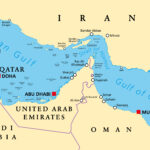Today’s competitive specialty program marketplace requires attention to detail, including efficiency, professionalism and ethics. One way to stand out above the rest is to become a best-in-class program writer.
Thomas Wilson Jr. and Gregory Katz of Wilson Elser Moskowitz Edelman & Dicker LLP, a law firm specializing in insurance defense, have been conducting evaluations for Target Markets Program Administrators Association’s Best Practice designation since its inception earlier this year. The TMPAA Best Practice designation process includes surveys, onsite evaluations by experts and a final report.
Both Wilson and Katz say finding ways to improve best practices goes beyond the designation program. Firms that lack best practices may be at risk for costly errors and omissions claims.
The goal in obtaining best practices has to do with being efficient, using the same processes, same form letters and same factors in determining how business flows in and out of the agency, Katz said, “[e]nsuring that not only is it standardized, but it’s written out and that the proper training is given to the personnel.”
Under review
When reviewing MGAs for the Best Practices designation, Wilson said he reviews the firm’s operations, accounting systems, human resources department, company files, underwriting files and/or claim files, and, at the end of the process, makes suggestions or recommendations on what he believes are areas that could be improved.
But self-audits can be just as valuable as the law firm’s reviews. The most important thing — whether for a self-audit or for the Best Practice designation — is to remove as much discretion from the process as possible.
“If an application or submission is made to your agency, there should be steps lined out in writing that all underwriters and underwriter assistants take each time a submission comes in,” Katz said. “Those steps could be reviewing the application, ensuring it’s signed, obtaining all the documentation for prior policy years, applying it to the rating information that the carriers provide, and just almost following through on a checklist.”
Another step that could save a firm from a costly E&O claim is to ensure that another set of eyes, even a third set of eyes, are involved in the process, Katz said. “It’s been our experience that some of the larger MGAs will actually utilize outside consultants on a full-time basis to essentially audit the internal doings of an agency.”
Katz said the Best Practice evaluation process can help reduce potential E&O exposures.
“We try to identify certain internal processes with regard to the servicing of their clients. We try to identify additional or more efficient types of processes. We make recommendations … like [having a] peer review, someone reviewing the work of the underwriter or the technical assistant or [having] the person that’s responsible for perhaps issuing endorsements to make sure that they follow through and provide that on a timely manner.”
What to watch out for
Wilson said the biggest exposure agencies should look out for are lack of internal controls and internal audit processes. “That opens up the opportunity for mistakes or errors, or people actually doing things that do not comply with best practices. Or, [a lack of controls] possibly opens you up to an E&O claim,” he said.
Documenting a file properly, whether it’s a paper or paperless file, is crucial, Wilson added. “You want very, very, very tedious document note-taking within a file as to what coverages are being bound and what coverages are not being bound, the policy effective date, and, if there are any issues about any endorsements which curtail coverage, you want that well-documented,” he advised. “[T]hose are the little things that often make a big difference in not only defending an E&O claim, but in eliminating or reducing the possibility of being faced with one.”
Katz added that documentation is absolutely key at the early stage of litigation. “The fact that everything is documented enables the lawyers to have a defense, [to] have something in writing which is essential to defending these types of claims,” he said.
Wilson said proper documentation and best practices can mean the difference between being brought into litigation and remaining in litigation, as well as being found negligent or responsible.
Topics Professional Liability
Was this article valuable?
Here are more articles you may enjoy.


 China Construction Bank Sued in US Over Reinsurance Fraud Losses
China Construction Bank Sued in US Over Reinsurance Fraud Losses  Michigan Supreme Court Rules Against Couple in Drone Surveillance Case
Michigan Supreme Court Rules Against Couple in Drone Surveillance Case  Three Insurers Reject Chevron’s $57 Million Claim for Iran Oil Seizure
Three Insurers Reject Chevron’s $57 Million Claim for Iran Oil Seizure  Ardonagh to Acquire Australia’s PSC Insurance Group for A$2.3 Billion
Ardonagh to Acquire Australia’s PSC Insurance Group for A$2.3 Billion 


